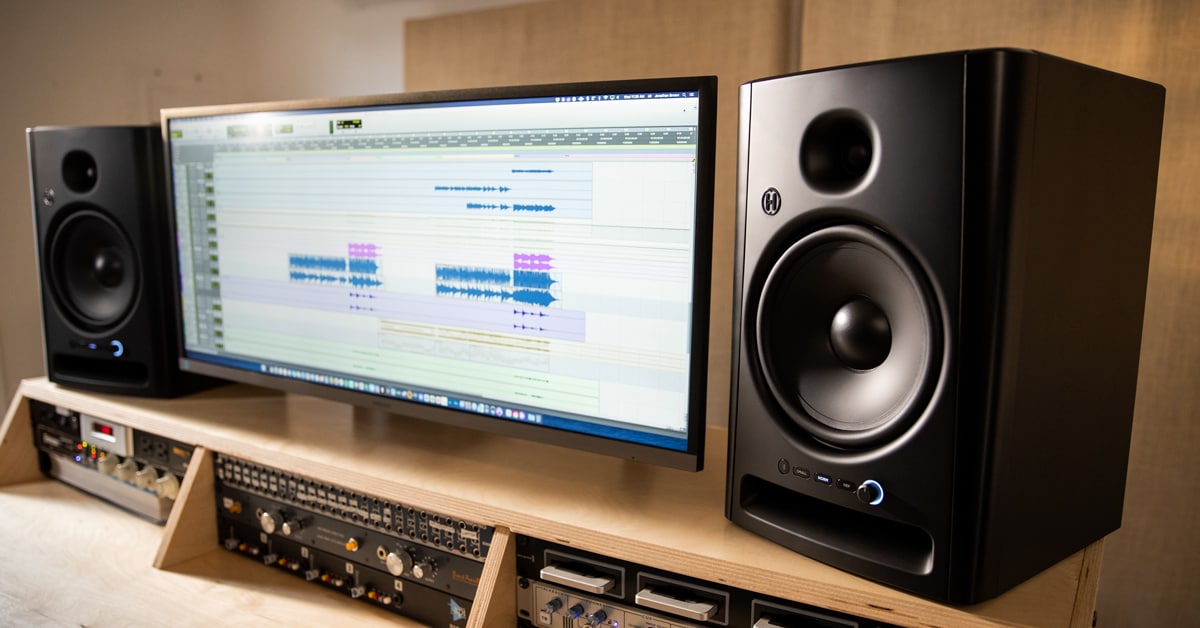Harbinger’s “musician first” mantra has driven the company to seek real-world solutions for how live performance audio can best serve the needs of those who sweat it out in clubs, bars, conferences, DJ venues, small theaters and even outdoor facilities. As a result, Harbinger’s live sound products are often the go-to gear for performers who want excellent and immersive audio, unfaltering reliability and innovative technology that makes sense for how they get out there and perform.
And now, Harbinger is focusing that same approach on recording musicians.
The new VARI SM505 and SM508 studio monitors weren’t developed simply to sound great—although they most certainly do—but also to provide music creators with a compact, all-in-one tool for crafting amazing mixes that translate to the world outside of your studio. And get this—you only have to get one set of VARI monitors to make that happen. Say goodbye to myriad reference speakers, constant jumps between different playback systems, or simply missing out on nurturing your mix talents if you’re unable to set up a multiple-monitor listening environment.
Guitar Center Product Manager for Private Brands Patrick O’Connor will take you through the benefits of the new VARI monitors, explain why Harbinger wanted to make an impact beyond live performance audio and even share a few tips on how to arrange your mix position to hear more accurate sound reproduction.
After so much success in the live sound field, what prompted Harbinger to expand into studio monitors?
Patrick O’Connor: Anyone who has checked out the live sound room at their local Guitar Center the past five years knows about Harbinger, and our powered speakers with built-in mixers and DSP, as well as monitors, line arrays, all-in-one PA systems and so on that we’ve brought to market. In every single one of those cases, we focused on questions such as, “How are people using this?” and “What can we do that isn’t already being done by someone else?” We want to constantly provide the best solutions for Guitar Center customers.
In the live sound space, I think we’ve been successful because we use super-high-quality drivers that reproduce audio very accurately. We also do a lot of DSP to tune speakers for different uses and venues. For example, the optimum sound needs of a band versus a DJ are not always the same. Then, we incorporated Bluetooth into our newest speakers and mixers—which customers really wanted. And yet, Bluetooth connectivity hadn’t shown up on many products. We did it and people love it.
So, circling back, we looked at the world of studio monitors, and we said, “Hey, a lot of what we've been doing in live sound could really apply in home and pro studios.”
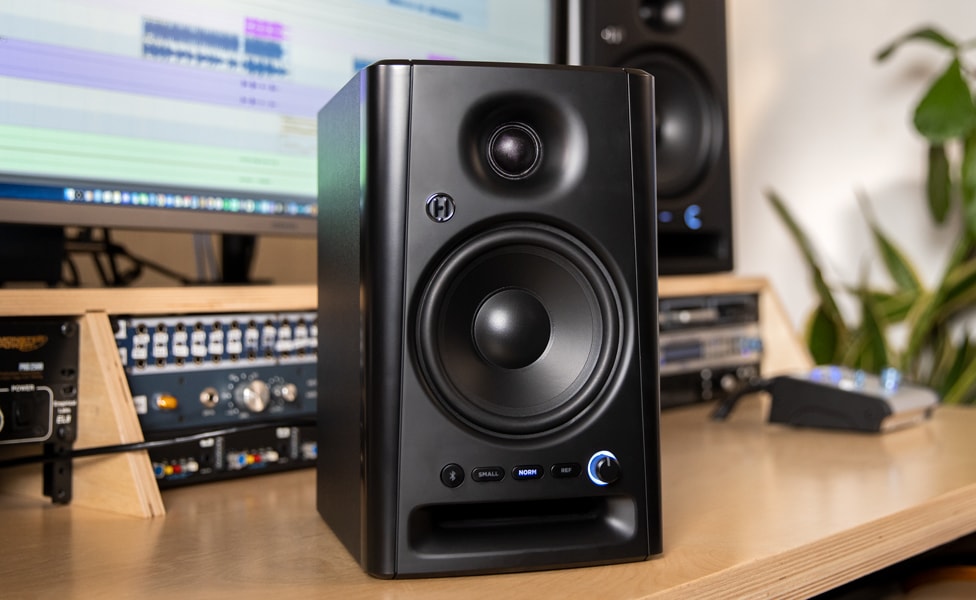
How much did your live sound expertise inform the development of the VARI SM505 and VARI SM508 studio monitors?
There's obviously a big difference between live performance and studio production. In a live situation, you are performing to an audience in a fixed space, and you are in control of the sound system. Your job is to ensure your performance is translating to those people in that environment through your speakers.
Studio production is kind of the opposite. Now, your job is to come up with a great sound in your studio environment that will still sound great on whatever speakers the customer chooses to listen to. That can be challenging, because people listen to music in so many ways. Perhaps it’s earbuds, or the tiny speaker on their phone, or on any number of the different Bluetooth speakers available to bring music to your kitchen, bedroom, garage or living room. There’s a real diversity of listening environments. How do you mix for all of them?
It used to be that you’d try to ensure a mix would translate to other listening environments by burning a quick CD and running out to listen in your car, or popping the disc into a boombox for playback.
Let me tell you two stories about why multiple reference systems are still important today. Back in the day, I produced and mixed an entire CD, and I was super proud of the mix I had done. A couple of months later, a whole bunch of my friends were listening to it at one of their houses, and I was like, “What happened?” The elements didn’t sound right, and I thought, “Wow, I don’t know how to mix. I’m not any good at this. I should just stop.” It took a while for me to play it again on my speakers, but when I did, suddenly the mix was back. That was a hard-won lesson that relying on one set of speakers can lead you to make mistakes. In this case, I had done a good mix on my speakers, but that mix did not translate well on my friend’s speakers.
The other thing is when you go to a professional recording studio, you often see more than one monitor setup. There are precision reference monitors, large monitors that are usually wall mounted and then something that represents consumer speakers.
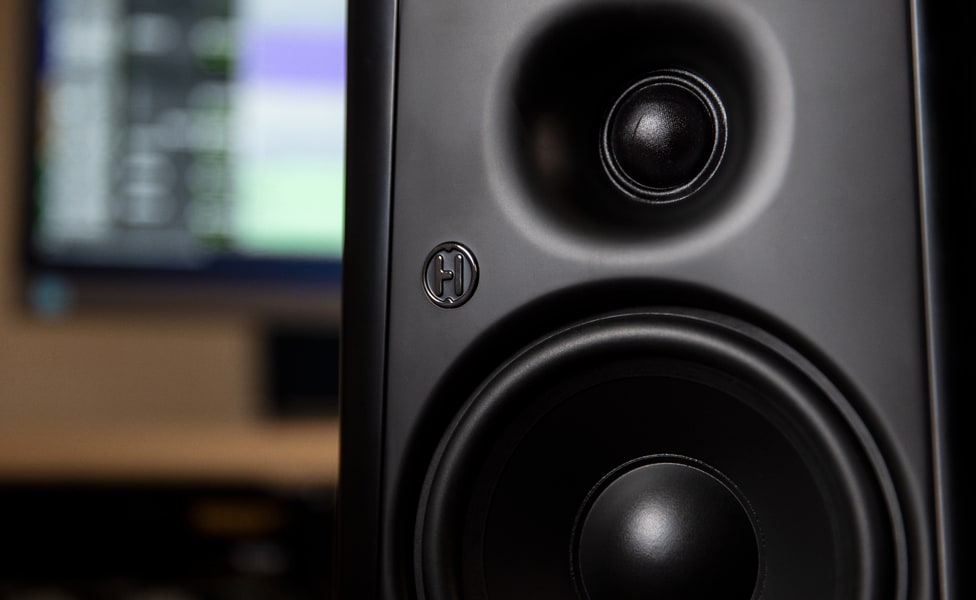
So, we realized that a set of conventional studio monitors—powered or not—is giving you one voicing and asking you to succeed as a mixer in the same way that people succeed who aren't listening to just one set of reference monitors. You’re not getting the benefit of hearing your mix on different speakers unless you buy extra speakers.
Well, we know a lot about DSP, and we can tune a speaker to offer many voicings. Why not translate what we can do for live performance speakers to studio monitors? For the price of one set of monitor speakers, we can give musicians three different studio monitors in one cabinet. Now—just like in pro studios—they can get three separate references of a mix, switch back and forth between the options to identify any audio problems and have a better chance of ensuring their mixes translate to other playback speakers.
What is your recommendation on the best way to use the three selections of the Harbinger Perfect Mix DSP?
Flat is the reference mode, and I like to describe it to people like this. For breakfast, you could have cereal with sugar, or you could have a fiber cereal. You know the cereal with sugar is going to taste great, but you also know the fiber cereal is the one that keeps you healthy. Flat mode is kind of like fiber cereal. If you want to have an extremely accurate idea of what you're laying down, go for reference mode.
However, if you want to be inspired, use Normal (NORM) mode—which offers a richer low-end response and a little more push in the midrange and treble.
Small is probably the mode with the least thrilling audio spectrum, but it’s essential for checking how a mix translates to mobile devices, laptops and the like.
But it's not like there's a right and a wrong mode. They're for different purposes. One of the things a colleague pointed out was it's not that each one of the voicings is the be-all and end-all best voicing. It's about the way the modes complement each other, and how the three choices are used together. It's the process of checking your mix against all three. That's where the magic is.
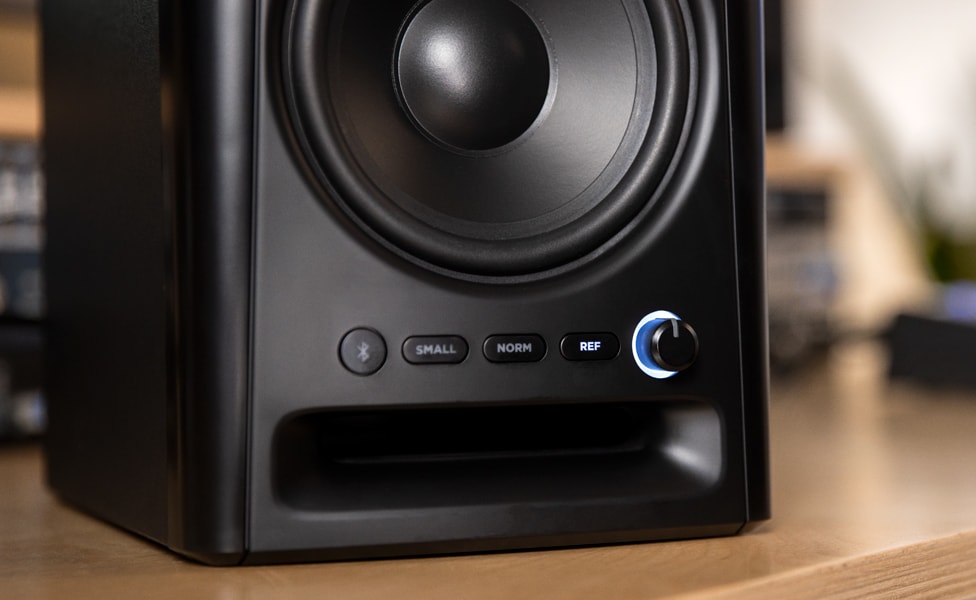
Basically, how does the DSP achieve this kind of “playback morphing?”
The DSP provides the crossover, multiple bands of EQ, system-protection limiting and other dynamics processing that lets us reshape the reproduction for each mode. For instance, we obviously use EQ to take away a lot of bass response for the Small mode. But it also makes sense to use the low-frequency driver to support the mids a little bit more when in Small mode. We do that by shifting the crossover frequency and slope, which changes the balance of audio sent to the high-frequency and low-frequency drivers.
There's a lot going on under the hood, but what we try to do with Harbinger is to understand the engineering, and take on all of the complexity, but reduce it to something incredibly simple for customers to access and benefit from.
How do you envision the Bluetooth connectivity of the VARI monitors benefitting recording and mixing workflows?
There are a couple ways that Bluetooth benefits customers. Number one, we realize many customers don't just produce music, but they consume music, as well. Their home setup may act as a music production space, gaming area and entertainment hub. Having the VARI monitors be more versatile fits into the way people rely on speakers these days.
Second, what do people do when they're working on a mix? They’re usually referencing their mix to songs and parts they like. They’ll think things such as, “I wonder if I’m nailing that U2 guitar tone?” The simplest and quickest way to do that is to pull up Spotify on your phone and grab that track. And with Bluetooth connectivity, you can find reference songs constantly and A/B those tracks with your mix on the same monitors, and in real time. Super easy.
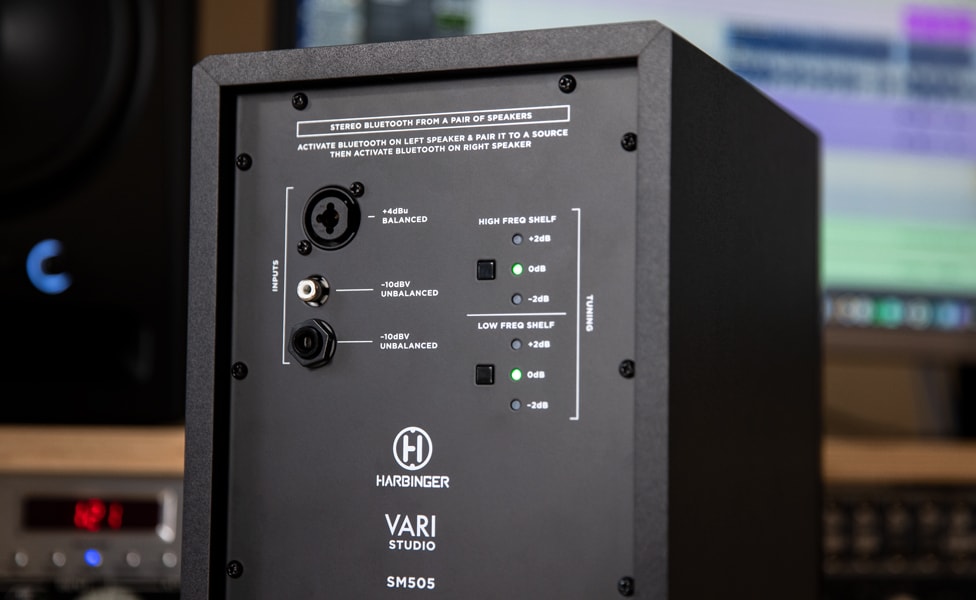
You hear a lot about waveguide design and how it can be used to concentrate or disperse sound to produce a more linear frequency response. How does the waveguide on the VARI SM505 and SM508 affect imaging?
Waveguide is most important for your mid- and high-frequency reproduction. People may notice that surrounding the tweeter on our monitor is a very purposeful shape. It's not a circle. It's recessed, and it has a parabolic curve that is very specifically calculated. What we are really focused on doing with the waveguide is ensuring all of the frequencies are being distributed in a sort of fair and agnostic way. You're not getting a promotion of one frequency band versus another, so we can provide highly accurate reproduction.
In addition, the stereo imaging is very carefully managed. Where you'll hear that benefit is when you sit in front of our monitors at the proper nearfield monitoring position, listening to a mix with strong stereo elements and a prominent centered element—such as a vocal. Close your eyes and focus in on that vocal, and it will seem almost as if there's a third speaker right in front of you delivering that vocal.
That's called phantom center, and it's something you get on monitors that are providing very accurate, pinpoint stereoization of the elements in the mix. Other studio monitors might smear the stereo placement. You may be able to localize something that's hard left and hard right, but something that's 20 percent left or right is probably not going to reveal to you exactly where it is. So, the waveguide is important for both frequency response and spatialization, and we worked really hard to get both of those right with these monitors.
Even with monitors that can offer multiple voices, I would imagine you still need to place the monitors where they can deliver the most accurate sound. What’s a typical monitor-placement strategy for the average room?
If you can, it's good to get the monitors away from the walls of your room. Another thing is to sit where you're going to listen, and look at the left monitor and the right monitor. What is behind and around each monitor? For example, if the left monitor is in front of a curtained window, and the right is in front of a brick chimney, you are going to get very different signal reproduction from left and right. You want each monitor shooting at you from where its background environment is equivalent to the other.
The placement issue is why we have front bass ports on our monitors instead of rear bass ports. If you’re firing sound into the walls behind your monitors, you are basically making your entire room like a monitor enclosure. Whereas by putting the front bass port on the front, if you are in the proper nearfield monitoring position, you're getting very little interaction with the room when making mix judgments—especially if you're not cranking levels to an ungodly level. We think the front bass port is a huge advantage, because it helps reproduce audio in many different spaces without being overly affected by the room itself.

It's also great to avoid having acoustically reflective surfaces between the VARI monitors and your ears. If you have your monitors on top of a glass table, the tweeter is going to be projecting to the glass table and to your ear. What you're going to get is one signal will arrive instantly, and the other will arrive two milliseconds later. We call these small deviations in time comb filters, and they will literally notch out certain frequencies. And, again, you need to hear all frequencies as accurately as possible in order to produce mixes that sound good on multiple systems.
On that subject, another important thing is aligning your ears with the tweeters vertically. If you have the monitors lower or significantly higher than your ears, you will be projecting key frequencies past them. An altered frequency response does not make for accurate mixes. It really is important that the tweeters point right at your ears.
So, I’m excited about the VARI monitor concept and super thrilled about the Perfect Mix DSP. But now, I have to choose between SM505 and SM508. Could you help me choose which size is best for me and my needs?
Five-inch woofers are the most popular format for small-scale studio monitors. They're really a great standard. The nice thing about the eight-inch woofers is that they can obviously give you a richer low-frequency profile. But it's not just about low frequencies. Eight-inch woofers have a bit of a different midrange voicing, as well. I would also say that if you're going to have clients or other musicians listening to the mix with you, the eights are more impressive. They’re bigger and fuller sounding. However, if you're doing music production on your own—and especially if you're space constrained—fives are not going to fail you. They are perfectly great monitors.










